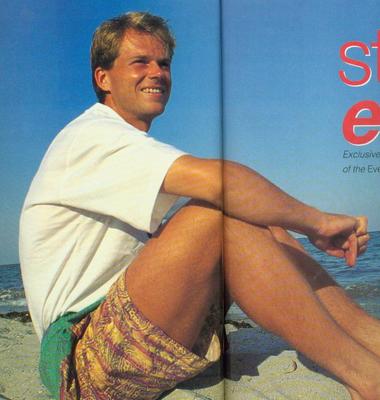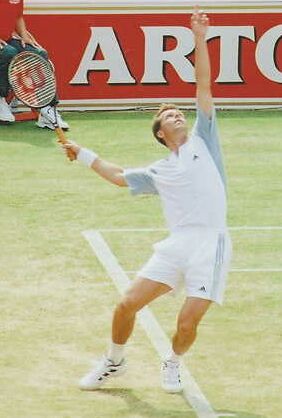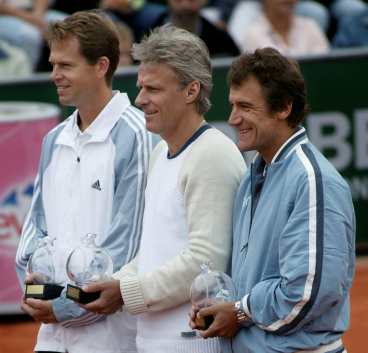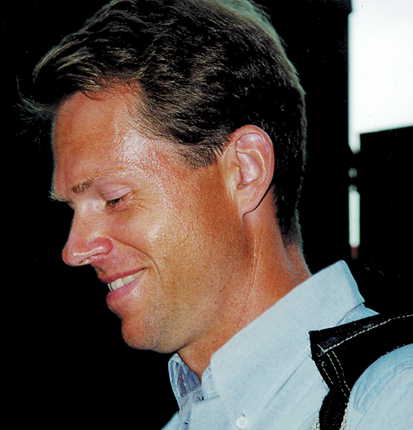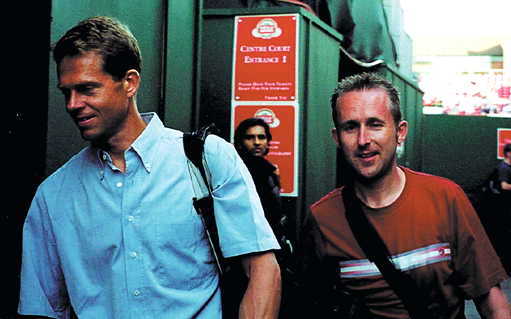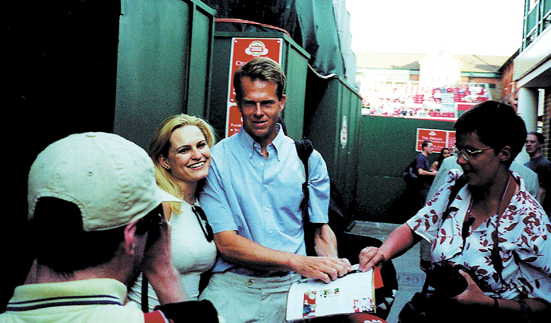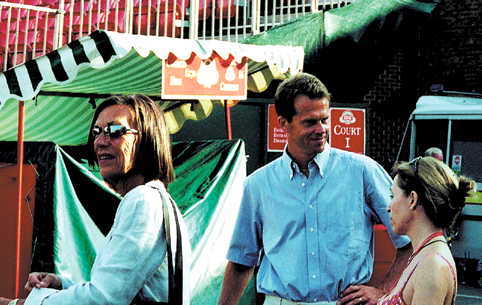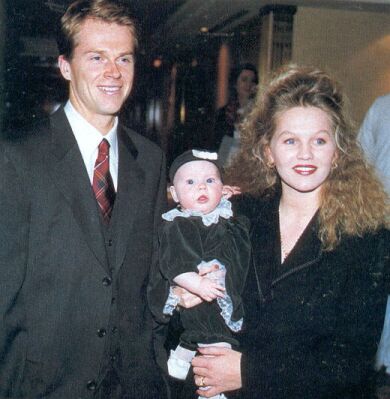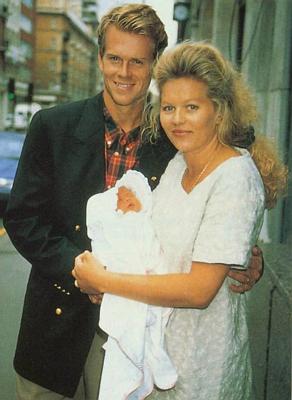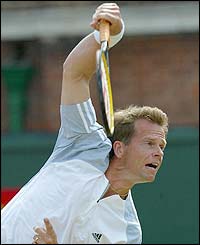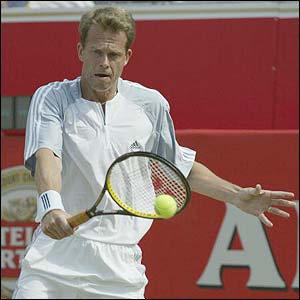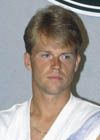Do you think things are a bit slower on the courts?
SE: It's hard to tell. I've been looking a little bit at the matches here. Obviously there is a lot of tennis played form the back of the court but they do it well and they do what they can and what they do best, but it has changed a little bit over the years, everybody has to agree with that and it's not easy serving and volleying out there
What do you think about the absence of serve and volleyers?
BB: Well in my opinion, Stefan in his good days would serve and volley and so would I, its a question that you don't have many playing it all year round. You saw the match with Roddick and Agassi - it was still a very fast and powerful game, so if you've got the weapons you are still going to use them. But in general, the yes is played more from the back and you've got more rallies, and it doesn't really matter if you play on clay or grass or on hard courts, guys like to rally.
SE: It could go in cycles, that has been in the past. There were a lot of serve volleyers at one time and now they are playing from the back of the court and hopefully it will change a little bit. I think what is needed is a contrast of different styles, it makes the game a little bit interesting, I think, because usually the best games you watch is an aggressive player playing against a defensive player, where you have a lot of movement up and down, forwards on the court, that could help. I think what has changed also is that the guys return a lot better today than the used to do. If a guy had a big serve 15, 20 years ago you would automatically step back one or two steps to get more time, today they don't, they stand at the same place and they react so much faster. That is the difference.
What do you think of the way Andre Agassi is still going?
SE: To me it's astonishing. He is playing some great tennis, he's 33. It's quite amazing. If you look back in history it has been quite difficult to win grand slams once you pass 30 years of age but he's proven you can do it. He's probably one of these exceptions that come once in a while, he can stay focused on what he is doing, he's enjoying what he's doing and he's working out hard and still got the power to do it. I'm very impressed to say the least.
BB: The big difference between his career and our careers is that we produced every year, we were in the top five or top two, Agassi for a number of years he was gone, he wasn't playing, back to '97, he was ranked 150 in the world, basically not playing, giving up tennis so that gave him a couple of years from his body and game wise. When Stefan retired in '97, and I a year later, we had for the last 12 years played our 60, 70, 80 matches on the top level, and sooner or later that is going to catch up and eventually it did at 30 years of age. That's the difference with Andre, he saved himself a little bit with his career.
Is there one favourite for you for Wimbledon?
BB: No. There are a number of favourites, you have to always go with the defending champion first, that's Lleyton Hewitt. He's not up to his level he was last year, he was the number one favourite, then you have Agassi, through his performances this week Andy Roddick and I would usually always say Pete Sampras but he is not around this year, so that's a first. I think nit's pretty open. The last couple of years you had two, three, four guys who were definite favourites, this year I find it far more open than in previous years.
In the women's I have to go with the Williams sisters. Clay is a different story but on grass with their power, and also the fact that they haven't won in the last couple of weeks or month, a major. It probably makes them more determined to come back and win again, but we'll see.
SE: I totally agree with Boris on what he says for both the men and the women sides. That's the predication from me too.
Any outsiders you fancy?
SE: Not from me. I haven't particularly watched a lot of tennis on television. No one that I can come up with. What about you Boris?
BB: I like the young Croatian (Mario) Ancic. I think he has shown not only last year beating (Roger) Federer but this year giving Andre a good run for his money at the French, he could be up for a couple more rounds this year, plus Roddick, the guy is only 20 years old and he hasn't produced his major tennis at a Grand Slam but he's about ready now.
Roger Federer has failed to deliver at a Grand Slam, what about him?
BB: I actually forgot to mention his name because he is the most naturally gifted played around and he can play on any surface. The fact that he has been winning Masters Series events, so not producing in a Grand Slam must make him upset. He's one of the top four favourites I would consider to win Wimbledon.
SE: I've seen him play and I agree with Boris. He has the potential to win, no question about it. He's got the talent but maybe there is something up there missing as of now but once he cracks it and gets into a groove and starts winning matches it will end (not performing) pretty quickly at the next few Grand Slams.
How do you see things with Lleyton Hewitt at the moment?
BB: Every number one goes through a dry spell. It was in Stefan's career and it was in my career. It's just natural. Your opponents read your game better. It's far more pressure producing it the second or third time around than the first time around. You as a young man grow older, have a girlfriend and all the distractions that take a little bit away from it, but eventually you come through and that's the same with Lleyton. He is a very, very talented young player, got the right attitude, loves tennis, loves to win and he will be back winning. It's just a question of time but as of now he's maybe 10% off from last year.
Do you really think that's the case seeing that he's won Scottsdale and Indian Wells, won at Davis Cup and all three matches at the World Team Cup and while he struggled at Queen's, he still got through a couple of matches.
BB: The problem being ranked number one or the current Wimbledon champion, you're level is there (showing how high). He didn't win the Australian, he didn't win the French, he's not number one on Monday (week before Wimbledon) and that's what you measure it on. He's still one of the very best of the game but there is only room for one number one, and he's not that anymore because his level has just dropped a few percent and that means he will lose in a semifinal or a final. That doesn't mean he's bad, by no means.
In your opinion why do you think the over-35s circuit hasn't been a success, is it too expensive to stage, should they be promoted before a regular tour event, what?
BB: I have played them so maybe I should answer. The problem is that it was run by (Jimmy) Connors and he happens to be 50 now, and (John) McEnroe took over and he's 44. It's basically now in our hands and when we do hold a tournament in an environment that loves tennis, and as you said, in front of a major tournament, it's very successful. I was playing for two days with John and Patrick McEnroe in Hamburg and we had 24,000 people over two days. I played Michael Stich in Halle and we had 12,500, and I think if Stefan and myself played anywhere in the world we would get as many. You need to get the right people and the right format to play one another and then there's a chance. Then again it has a lot to do with who's hosting it and who's responsible and who's speaking with what and whom ... so, you are talking about politics here and this is not our forte.
